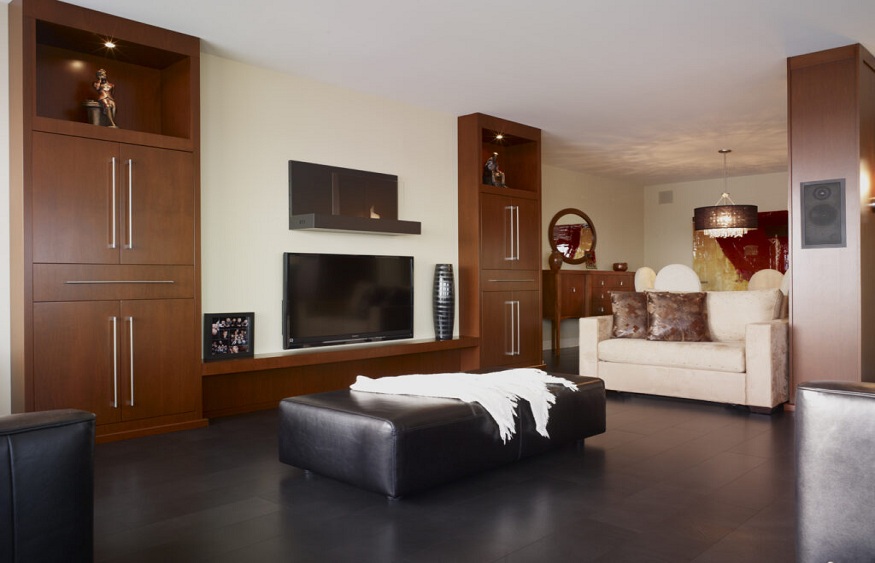Leather flooring is an innovative and luxurious option that has been gaining popularity in the world of home interior designs. Known for its unique aesthetic appeal and warm texture, leather flooring can add a touch of elegance and sophistication to any space. However, like any other flooring type, it comes with its own set of advantages and disadvantages.
This article aims to delve into the pros and cons of leather flooring for home to help you make an informed decision about whether this unconventional flooring choice is right. From durability and maintenance to cost and environmental impact, we’ll explore all aspects of leather flooring.
Pros of Leather Flooring
Ø Leather Flooring Looks Great
Leather flooring for home adds an undeniable touch of luxury and sophistication to any space. Its unique texture and natural patina evolve over time, adding character and depth to your interior design. Leather flooring also comes in a variety of colors and finishes, catering to diverse aesthetic preferences and home décor ideas. It can complement both traditional and modern decors, making it a versatile choice for homeowners.
Ø Leather Flooring Is Durable
Despite its seemingly delicate nature, leather is a durable material that can withstand daily wear and tear. It’s resistant to damage from dropped objects and heavy foot traffic, making it suitable for high-traffic areas like living rooms and hallways. Moreover, leather flooring tends to age beautifully, gaining a richer hue and texture over time, much like a well-worn leather jacket.
Ø Leather Flooring Is Easy to Maintain
Leather flooring requires minimal maintenance compared to other flooring types. Regular sweeping or vacuuming is sufficient to keep it clean, and spills can be easily wiped away without leaving permanent stains. Furthermore, leather floors can be reconditioned with special products to preserve their luster and prolong their lifespan.
Ø Eco-friendly
Leather flooring is often made from recycled leather, making it an eco-friendly choice for environmentally conscious homeowners. The process of repurposing leather scraps that would otherwise go to waste reduces landfill and contributes to a circular economy. Additionally, leather is biodegradable at the end of its life cycle, unlike synthetic flooring materials that can take hundreds of years to decompose.
Cons of Leather Flooring
Ø Leather Floors Are Expensive
One of the most significant drawbacks of leather flooring is its cost. Leather is a premium material, and the process of turning it into flooring can be labor-intensive. This results in a higher price tag compared to more traditional flooring options like hardwood or tile. While it may add a luxurious touch to your home interior designs, the initial investment for leather flooring can be considerable.
Ø Leather Floors Are Vulnerable to Sunlight, Heat, and Water
Leather flooring requires specific environmental conditions to maintain its look and durability. It can fade or discolor when exposed to direct sunlight for prolonged periods. Similarly, high heat can cause the leather to dry out and crack over time. Additionally, while leather can handle small spills, it is not suitable for home décor ideas in areas with high moisture levels, such as bathrooms or laundry rooms, as water can warp or stain the material.
Ø Leather Floors Are Prone to Stains and Wear and Tear
While leather flooring is relatively durable, it’s not immune to stains and wear and tear. Dark liquids like red wine or coffee can leave permanent marks if not cleaned promptly. Moreover, sharp objects can scratch the surface, and heavy furniture can leave indentations. Over time, these small damages can accumulate, leading to visible signs of aging and potentially necessitating costly repairs or replacement.
Leather flooring is a unique and luxurious option that can elevate the aesthetic appeal of any space. Its durability, ease of maintenance, and eco-friendly nature make it an attractive choice for many homeowners. However, it’s essential to consider its drawbacks, such as its high cost, vulnerability to sunlight, heat, and water, and its susceptibility to stains and wear and tear.
Therefore, while leather flooring can be a great addition to certain home interior designs, it may not be the ideal choice for all situations or budgets. It’s crucial to carefully weigh the pros and cons before deciding on this type of flooring for your home or commercial space.

